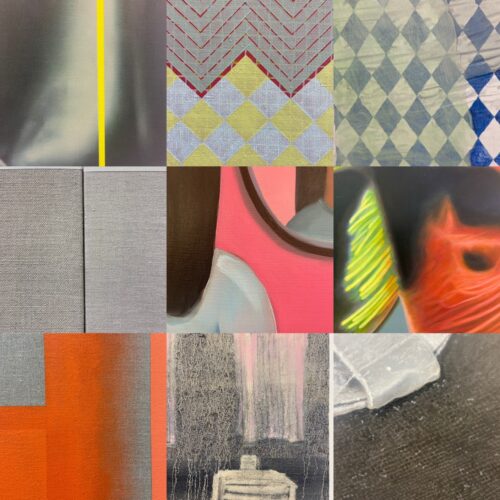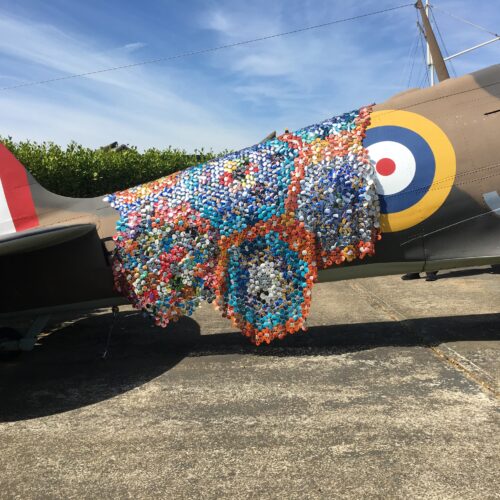
Cotton : Global Threads

The complexity and scale of this exhibition is remarkable. Each installation – whether in the four thematic ‘context’ groupings as well as in the contemporary grouping tantalizes the viewer – to ask what the connection is between each exhibit. – to think about and to reflect on many uncomfortable aspects behind the making of a textile – both historically and in contemporary manufacture. We are made aware that the exploitation of workers – many of them children, whether in the mills of Lancashire in the nineteenth century or India in the twentieth century has to be kept in mind when we enjoy the visual and tactile quality of cloth – especially cotton. Also the way cotton goods were dumped on the Indian and African markets – forcing local craftsmen out of business. Likewise – the different chemical dye and print processes, each of which have associated health issues, from asthma to cancer which went unrecognized and then ignored by the dye plant manufacturers. We are also asked to consider the alternative craft based practice which still manages to survive despite mass production In the beautiful and fascinating West African Indigo dyed fabrics you first see the colour and the pattern. You want to feel it, think about the process, remembering your first sight of white cloth turning yellow then blue – then you see the fashionable blue jeans and begin to think about the exploitation of the seamstresses, but also about the vast Indigo plantations which went out of business when synthetic Indigo was invented – and how the Indigo plantations of the far east had in turn, supplanted our native Woad growers.
In reflecting on my reactions to the exhibition, after two visits, I began asking myself why certain pieces caught my attention more than others and made me want to see and know more, I began to think about how the drama of how these textiles were exhibited. Exhibiting anything outside a frame in a museum presents a dilemma, especially if the piece is particularly tactile. Grace Ndiritu’s video performance teases with revealing/hiding her body with cloths but it is strangely unsatisfying not to see and touch a textile.
Liz Rideal’s solution to this problem is particularly interesting. The tactile floating muslin on to which was projected pages from textile pattern books is not only riveting in how it catches your attention but it keeps your attention through exciting content which is continually changing. In addition, it was the only piece which allowed you to touch, in fact children were having fun walking through the installation. When you make connection with the very discreetly exhibited pattern book in the showcase, the whole concept becomes open ended; You are invited to follow the thread to the books themselves, which have all been recorded, with every pattern available to be seen on line. For artists who make pieces which use sequential design such as book form, (and indeed for curators who are showing textile pattern books) the issues present a dilemma. A book cries out to be opened, pages turned. How do you exhibit more than one page?

In the case of Anne Wilson’s long weaving ‘Local Industry Cloth’ which is so long that it stretches out along the length of the room, how do you show that which is hidden, under the neat pile of folds. Artists solutions to these problems are a fascinating and essential study for anyone who aspires to exhibit work. In Anne Wilson’s weaving, there is additional interest in the pattern of folding, stripes crossing stripes. I wondered if this could be a performance in itself – showing hidden colours and patterns by opening and closing pages or folds. Possibly this could be videoed. I wonder if Anne Wilson thought about how it would be exhibited before making it. Is this a valid way we should think, when making art textiles – or does it throw into question our motives in resolving our design problems.
Global Threads continues at the Whitworth Gallery until 13 May. This is a useful link to the pattern books of the Harris Museum – a superb pattern collection






Thank you for this review Pat – I think you have articulated really well the “uncomfortable” nature of the history of cotton highlighted in this amazing exhibition, I know that after visiting the exhibition I have a renewed appreciation for both the harsh history behind Lancashire’s cotton industry and also the harsh methods used to manufacture clothing which today we see as so disposable.